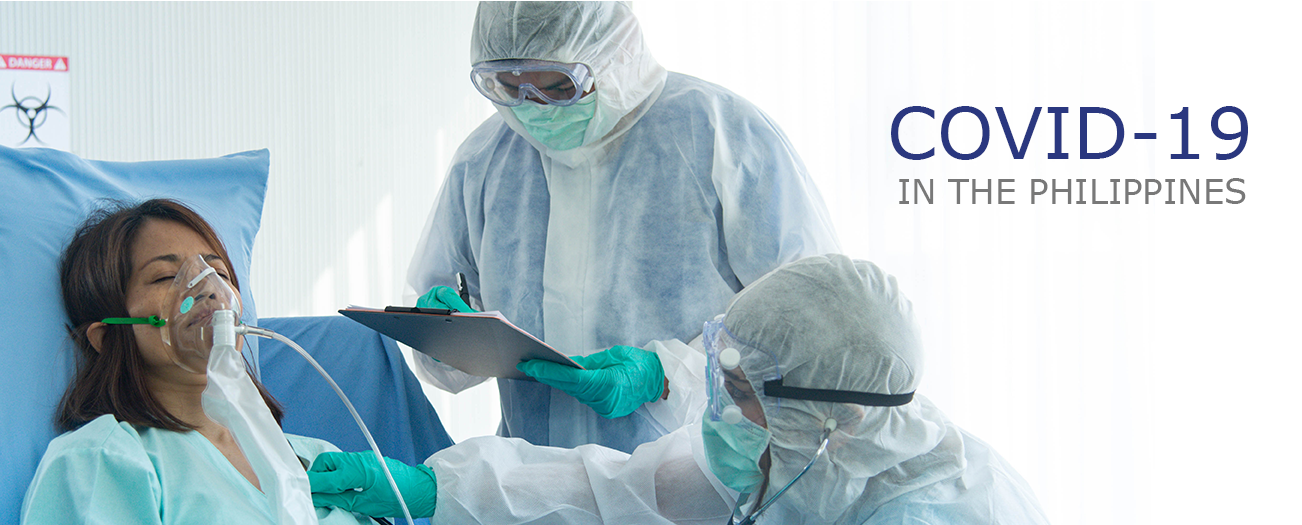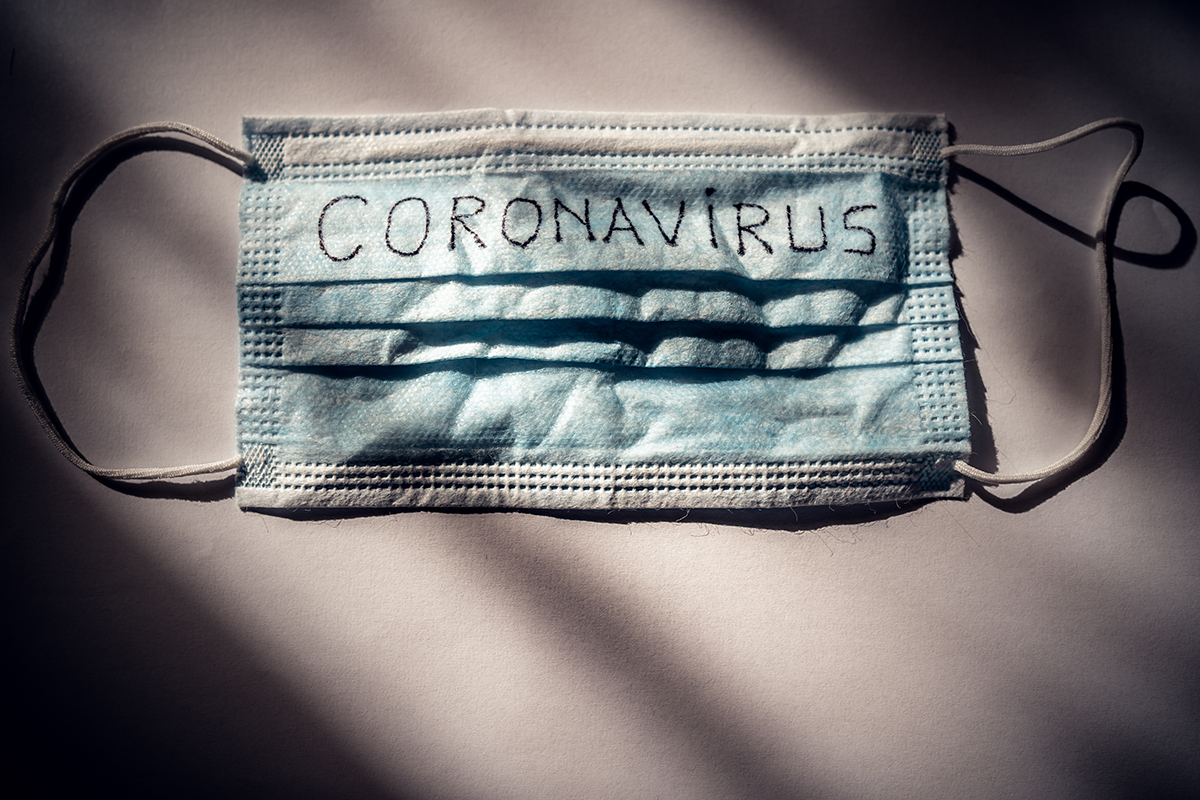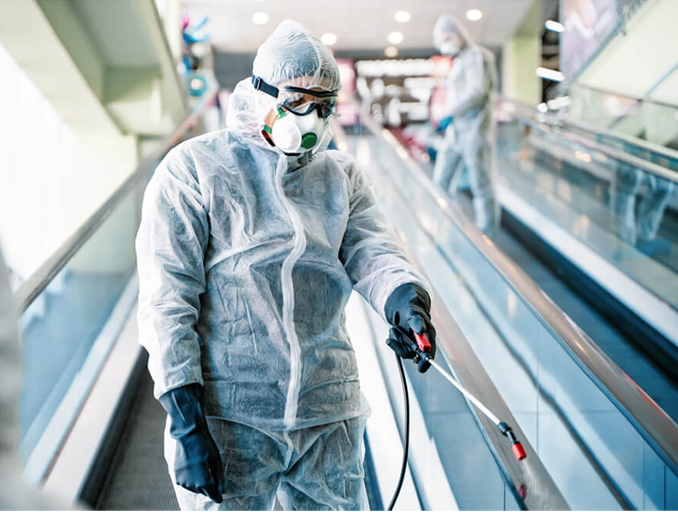 Top
Top
The world experienced drastic changes since the emergence and spread of COVID-19. The virus’ high infection rate essentially prohibits close human interaction, leading to severe repercussions on the global economy.
Here is a broad breakdown of how it began, how we adapted, and where we are now in this global health crisis.
The WHO recorded 4.9 million deaths from COVID-19 as of October 2021. Economic crises, job losses, and pause in education are just a few of the glaring consequences facing most countries. Several vaccines have been approved for “emergency use”, with some countries achieving high vaccination rates while others are managing uneven vaccination rollout. The virus has mutated into new variants like the Delta variant, currently responsible for a spike in new infections and hospitalization and mortality.

A 38-year-old Chinese woman from Wuhan was confined at San Lazaro Hospital in Manila. The Department of Health confirmed the first case of COVID-19 in the country.
44-year-old Chinese man who was admitted at San Lazaro Hospital died of COVID-19. The first COVID-19 fatality in the country
National Government imposed Enhanced Community Quarantine (ECQ) placing the nation to strict lockdown until April 14, 2021
Confirmed cases surpass the 500th mark; President Duterte signed the “Bayanihan to Heal as One Act” to reallocate and reprogram almost PHP275 billion from the 2020 budget to fund the government’s efforts towards COVID-19
DOH confirmed its 1,000th case with 68 fatalities
All 17 regions have had confirmed COVID-19 cases reaching 5,000th mark and 335 fatalities
The country breached the 10,000-mark on the total number of COVID-19 cases with 658 fatalities
The country breached the 50,000-mark on the total number of COVID-19 cases with 1,314 fatalities
The country breached the 100,000-mark on the total number of COVID-19 cases with 2,059 fatalities
President Duterte signed EO No. 121, allowing the Food & Drug Administration (FDA) to issue Emergency Use Authorization (EUA) for COVID-19 drugs and vaccines
COVID-19 cases reached 474,064 and 9,244 deaths by end of 2020
The Department of Health (DOH) confirmed the detection of the highly-transmissible UK variant in the country
Less than a year after the first reported COVID-19 case, the country reached its 500,000th mark with 9,895 deaths placing the Philippines to 32nd rank with the highest number of cases worldwide and second in Southeast Asia after Indonesia
1st batch of COVID-19 vaccines (SINOVAC- 600,000 doses) arrived
The first COVID-19 vaccine was administered to Dr. Gerardo Legaspi, Director of UP-PGH. Vaccination rollout began in NCR
DOH announced detection of the South African variant and the Brazilian variant of the virus in the country
487,200 doses of AztraZeneca COVID-19 vaccines arrived
Another ECQ was announced prior to the Holy Week until 4th of April which was extended until the 11th of April
The country had breached 1-M mark on the number of COVID-19 cases with 16,853 fatalities
15,000 doses of Sputnik V COVID-19 vaccines arrived
193,050 doses of Pfizer-BioNTech COVID-19 vaccines arrived
249,600 doses of Moderna COVID-19 vaccines arrived
1,606,600 doses of Janssen COVID-19 vaccines arrived
Due to the rapid increase of COVID-19 cases, Metro Manila was once again placed under ECQ until the 20th of August
100,000 doses of Sinopharm COVID-19 vaccines arrived
The country had breached the 2-M mark on the total number of COVID-19 cases with 33,533 fatalities
The Philippines Food and Drug Administration (FDA) approved emergency use of the Moderna COVID-19 vaccine for minors aged 12-17
Around 19.7 million people (17% of the Philippine population) are fully vaccinated and roughly 23.4 million people (21% of the Philippine population) are waiting for their second dose. The country aims to vaccinate 78 million people (70% of the Philippine population) by the end of the year
The country has reported a total of 2,509,177 confirmed cases with 37,494 confirmed deaths – the second highest fatality rate in Southeast Asia
Vaccination against COVID-19 of the general population including minors was approved by President Duterte that will start on October 2021 as announced by Malacañang
The country recorded the highest single-day increase in the number of recoveries at 45,249 bringing the total recoveries to 2,442,623. Meanwhile, 13,273 new infections and 112 deaths were recorded reaching a total of 2,593,399 COVID-19 cases and 38,768 deaths
The country recorded its first two cases of the Omicron variant from a returning Filipino from Japan on December 1 and a Nigerian national from Nigeria on November 30
The country logged the lowest daily cases of COVID-19 in 2021 at 168 new cases, the lowest record since May 2020
The first anti-COVID pill Molnupiravir was issued an Emergency Use Authorization (EUA) by the FDA. EUA for Pfizer’s COVID-19 vaccine was amended and approved for individuals 5-11 years old.
The country logged the highest number of daily cases since the beginning of the pandemic with 33,169 new cases pushing the total cumulative cases to 2,998,530; 2,788,711 as total recoveries; and fatalities at 52,293
The country breached the 3 million mark on the number of COVID-19 cases with 28,007 new infections, pushing the total to 3,026,473
The Department of Health confirms the community transmission of the Omicron variant in Metro Manila as evidenced by the country’s all-time high on the number of COVID-19 cases with 39,004, pushing the cumulative total to 3,168,379
The “No Vaccination, No Ride” policy in Metro Manila takes effect as the country continues to log a record-high number of COVID-19 cases
The country’s Philippine Food and Drug Administration has certified two brands of self-administered rapid antigen test kits
The country has eased its border control through IATF Resolution No. 159, allowing returning fully-vaccinated Filipinos regardless of the place of origin without the mandatory quarantine. However, a 48-hours negative RT-PCR test result before departure shall be presented.
The country officially started the COVID-19 vaccination of children aged 5 to 11 years old
The country recorded the lowest number of COVID-19 daily cases this year with 951
The country continues to report a low number of daily cases with a significant drop to 442
President Rodrigo Duterte signs Executive Order No. 166 which adopted a 10-point policy agenda to accelerate and sustain the country’s economic recovery from the COVID-19 pandemic
President Rodrigo Duterte signs Republic Act No. 11712, mandating continuous benefits to all healthcare workers in the country during the COVID-19 pandemic and other future public health emergencies
The national election took place for the executive and legislative branches of the government – national, provincial, and local, except for the barangay officials
DOH detects first cases of BA.2.12.1 Omicron Sub-Variant in NCR and Palawan
Executive Order No. 16 was issued by Cebu Governor Gwendolyn Garcia, lifting the mandatory use of face masks in open spaces in the province contrary to the guidelines set by the Department of Health. Raising concerns from the Department of the Interior and Local Government (DILG), guidelines were set regarding the optional wearing of face masks in late June.
Ferdinand “Bongbong” Romualdez Marcos Jr. took the oath of office as the 17th President of the Republic of the Philippines at the National Museum
Exactly 8 days after his assumption in the Malacañang Palace, President Ferdinand “Bongbong” Marcos, Jr. tested positive for COVID-19 via an antigen test as announced by press secretary Trixie Cruz-Angeles
School Year 2022-2023 begins in-person classes amid the COVID-19 pandemic
Acceptance

We’ve all experienced a major shift in the way we live our lives from the onset of the COVID-19 pandemic. A lot of people hoped that we could all someday return to the way everything was before COVID-19 – no masks, no social distancing, no lockdowns. However, the larger scientific community agrees that COVID-19 will be something we will have to live with for the long term. Such projections have left a great number of Filipinos uncertain of the stability of their futures, given how the pandemic impacted their way of life.
“The ongoing fight against COVID-19, including vaccination drives, prioritizes the control of its spread – not its eradication.”
The ongoing fight against COVID-19, including vaccination drives, prioritizes the control of its spread – not its eradication. Any means of destroying the virus completely is still out of reach, thus people are still heavily encouraged to practice safety measures, even those who are fully vaccinated.
This means that we, as a community, should learn to accept the reality of COVID’s health risk persisting in the foreseeable future – AKA “the new normal”. Filipinos are no strangers to adversity, and while this pandemic challenged us like never before, we continue to push through and are prepared more than ever, to accept this guarded co-existence with a public health risk.
We can’t expect to get rid of the virus and all the inconvenience it entails (yet), but with habitual safety practices, we can keep it at bay long enough to eventually lead us to a more permanent solution.
Adaptation and The New Normal

One of the most troublesome aspects of the COVID-19 virus is its ability to mutate and adapt to its environment at a fast rate. We could learn a thing or two about this adaptability by being equally as flexible in countering COVID’s heightened health risks.
According to the WHO, hand hygiene, avoiding crowded places, isolating if sick, constant hand-washing, wearing face masks indoors and in public areas, social distancing, frequent use of alcohol and sanitizers and scheduled disinfection of living spaces are some of the most important habits to adopt in this new normal. Our efforts to adapt to the constant health risk of COVID-19 have resulted in practices and policies that are drastically different from what we were used to.
“Our efforts to adapt to the constant health risk of COVID-19 have resulted in practices and policies that are drastically different from what we were used to.”
Communities and industries have already developed various means to maintain their productivity and lifestyles. Businesses, for example, have taken full advantage of online channels to interact and deliver goods to their customers. Online shopping reached full mainstream acceptance in the Philippines as a result. Other examples are virtual environments becoming the new platform for organizations, schools as well as social gatherings such as weddings, gender reveals, baptisms and even funerals. Public spaces are now only accessible to a limited number of people to discourage crowds, and all establishments now feature temperature checks, contact tracing, and sanitization as standard. These are just some examples of adaptability letting us stay ahead of the COVID curve.
Our operations underwent drastic changes to accommodate a variety of COVID-19 precautions. These measures mainly involve having as few people in the office as much as possible, such as switching to a skeletal workforce schedule. Such arrangements have also permitted remote working setups, where business and client meetings can be conducted in the comfort and safety of our own homes. Working onsite meanwhile, means face masks are always on except for meals, lending lunch breaks a newfound relief in seeing co-workers’ faces even in fleeting moments. The objective of isolation as a means of ensuring safety is as “anti-social” as any organization can conventionally get, but in these unconventional times, our common concern for our fellow man still brings us together, in a way.
Facing the Future by Bouncing Forward (Not Backward)

We might have suffered severe setbacks due to the pandemic, but it is important to bounce back and carry that momentum forward, especially with all the compromises we’ve made. We might still be getting used to dealing with a socially-distanced world, but that doesn’t mean we should give up hope on leading relatively normal lives.
These circumstances reinforce our responsibility to stay ahead of this looming threat; we have the power to take action with planning, and not merely react to whatever new problem arises. We are capable to define our goals and control our actions and respond positively regardless of the situation, whether good or bad. Vaccination – not just for COVID but shots in general – is a great example of humanity thinking and acting ahead of the current problems to ensure illness is prevented for generations to come.
“The human nature has a remarkable tendency for innovation and survival. A fact that we’ve demonstrated time and time again, especially in this global pandemic. That alone is enough for us to keep hoping and believing that things can and will get better in time.”
Maintaining a positive attitude goes a long way in our fight against COVID-19 and lets us focus less on problems and more on solutions. Stewing in negative thoughts is very rarely productive – spending that time and energy to act with purpose and positivity lets us bounce back stronger. Wear that mask with a smile, stay in touch with friends and family online, and share the practice of sanitization every chance you can.
The human nature has a remarkable tendency for innovation and survival. A fact that we’ve demonstrated time and time again, especially in this global pandemic. That alone is enough for us to keep hoping and believing that things can and will get better in time.
Finally, our responsibility as stewards of this Earth naturally extends to our protection of the environment. We at IGDC are taking the initiative to shield our community from pathogens and disease vectors in partnership with local governments to further prevent threats like COVID-19. Guided by our adaptive nature, positive attitude, and responsible innovation, we are confident we can bounce forward – stronger, wiser, and kinder than before.

It is expected that COVID-19 situation will remain a primary
healthcare challenge in the next 2 to 3 years.
ISHA GLOBAL can help prevent the spread
of COVID-19 cases in the country